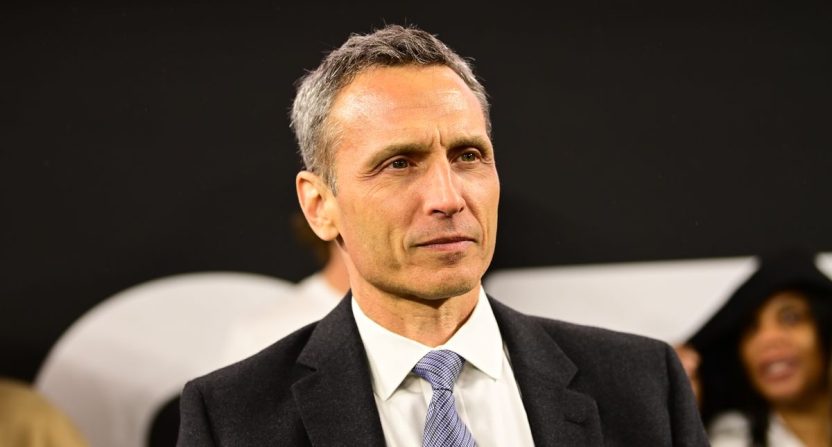As ESPN prepares to launch its new direct-to-consumer platform this fall, many are wondering exactly why the network chose now as the right time to finally make the move to streaming. After all, its peers at CBS and NBC launched their own streaming services, with a full complement of live sports properties, long ago.
Of course, the main equation for ESPN was choosing a time, and a price point, that wouldn’t undercut its still highly lucrative, but declining, cable TV business. In fact, beyond worries that a direct-to-consumer product would cannibalize its traditional revenue streams, the network wanted to find legitimate upside for launching a streaming product.
ESPN chairman Jimmy Pitaro has decided now is that time, and the upside is there.
On a recent episode of The Grill Room podcast with Puck’s Dylan Byers, Pitaro explained the reasoning behind the company’s timing, and why, while the company is “agnostic” about whether customers access ESPN via the direct-to-consumer platform or a traditional pay TV bundle, the network sees value in people viewing directly on its own platform.
“The way we’re looking at this is being additive,” Pitaro began. “This is a service that is really going to be marketed to the folks that are on the sidelines. That being said, we are somewhat agnostic in terms of how you subscribe to ESPN. If you want to subscribe, if you want to access us through the traditional way, that’s great. By the way, in the traditional side of the business, what we see is folks signing, often times, multi-year contracts, whereas on the direct side you’re going month-to-month. So there’s a concern of churn.
“So you can argue it both ways in terms of which side is more valuable,” the ESPN chairman continued. “Going back to the direct-to-consumer proposition, one of the biggest reasons why we’re doing this is we want direct access to the customer. We talk all the time, internally and externally, about the advantages of having that direct relationship and being able to personalize the service. And on the traditional side of the business, we do not have that direct relationship, we do not have the consumption data. So our personalization within the ESPN app right now is tied to explicit ratings and what we know implicitly about the customer, the sports fan, while they engage within our digital environment. But we cannot personalize based off their consumption behavior in the traditional ecosystem.”
That logic gets directly at a suggestion that the media analysts at LightShed Partners wrote about last week. ESPN isn’t necessarily launching this streaming service with the idea of gaining tens of millions of subscribers right off the bat. Sure, it’ll attract some customers that are currently “on the sidelines.” But the real reason ESPN is launching this platform now is to drive viewers onto its own platforms where personalization leads to increased monetization.
The tens of millions of homes still subscribed to traditional bundles will be able to authenticate into ESPN’s new platform and benefit from the personalization features just like a $30 per month subscriber would. But once that viewer is on the platform, they become more valuable to ESPN because they’ll interface with ESPN content longer than the average linear television viewer, and be served targeted ads while doing so.
That’s the “big reason” Pitaro and Co. decided to launch the platform now. Will that timing pay off? That remains to be seen.
